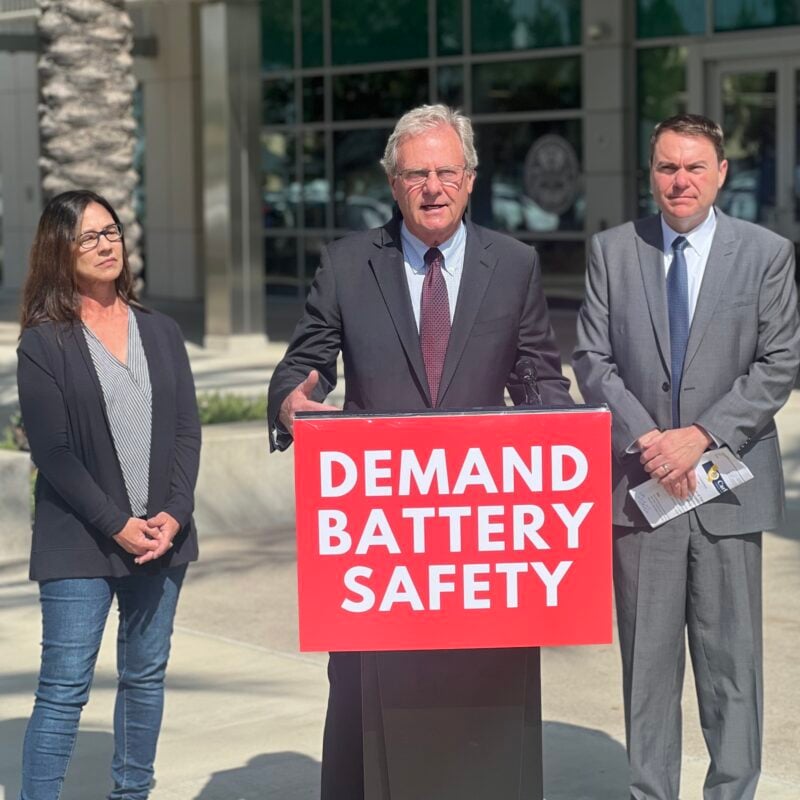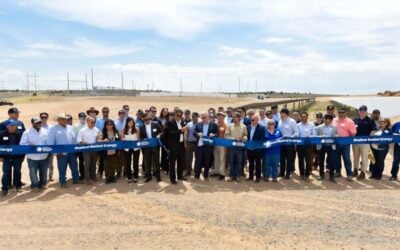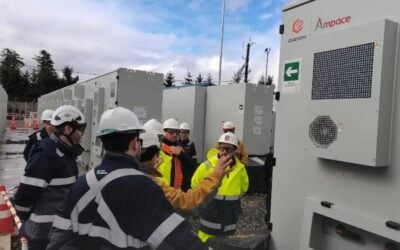
Matthew Biss examines legislative moves regarding the safe siting and deployment of battery storage in California, the biggest market by state in the US.
With the threat of increased tariffs on Chinese imports alongside heightened public scrutiny and increasing calls for tougher regulation, it’s been a testing five months for the US energy storage industry.
As with the rollout of any new technology, BESS has faced its fair share of public scrutiny over the past decade. However, with the number and size of projects increasing, coupled with a handful of high-profile fire incidents, the term ‘thermal runaway’ has become commonplace amongst local officials and political figures across the US in recent times.
In the face of grass-roots opposition to BESS, some local officials have taken matters into their own hands and enacted temporary moratoriums on the development of new energy storage facilities. As reported by Energy-Storage.news, this includes officials at the Town of Hanover in Western New York, the City of San Juan Capistrano in California and Cerro Gordo County in Iowa.
Try Premium for just $1
- Full premium access for the first month at only $1
- Converts to an annual rate after 30 days unless cancelled
- Cancel anytime during the trial period
Premium Benefits
- Expert industry analysis and interviews
- Digital access to PV Tech Power journal
- Exclusive event discounts
Or get the full Premium subscription right away
Or continue reading this article for free
Alongside new local laws, there have also been several new bills introduced to the United States Congress aimed at increasing BESS regulation in response to the fire at Vistra’s Moss Landing facility in Monterey County, California.
With some of these bills edging closer to becoming laws, it’s worth taking a look at how these new pieces of legislation could affect new energy storage projects destined for California.
Battery Energy Safety and Accountability Act
As the first piece of legislation introduced in response to the Moss Landing fire, Assembly Bill (AB) 303, dubbed the “Battery Energy Safety and Accountability Act”, has received wide-spread media coverage over the past few months.
However, its proponent, Assemblymember Dawn Addis, has struggled to garner support for the bill beyond its first reading. Under current California permitting laws, BESS developers can obtain planning approval through local authorities or via a process administered by the California Energy Commission (CEC).
Introduced by Governor Gavin Newsom in 2022 through the passing of AB 205, the CEC’s opt-in certification scheme offers a permitting alternative for developers of BESS projects over 200MWh. Although several BESS projects are currently under review by the CEC, none have yet to be fully certified.
As of May 2025, only BESS proposals from Engie and Intersect Power have made it to the final stage of the CEC’s opt-in process.
With some developers submitting project applications with the CEC after already having been rejected by local authorities, critics of the CEC-administered scheme have raised concerns.
As a cornerstone of the recently introduced AB 303, Addis is seeking to remove the California Energy Commission’s (CEC’s) regulatory authority over 200MWh+ BESS facilities. The legislation also calls for mandatory setbacks of at least 3,200 feet between energy storage projects and certain “sensitive receptors” that would include schools, hospitals and community centers.
As currently written, the bill will not only close off this permitting route for future projects, but also mandate the denial of all BESS project applications currently under review by the CEC.
Although well-intentioned, the bill has been widely criticised by the energy storage industry due to its excessive nature and potentially detrimental effects to California’s net-zero ambitions.
In a statement of opposition against the bill, the California Energy Storage Alliance (CESA) said AB 303 undermines the State’s renewable ambitions by “severely limiting the development of large-scale battery storage projects [and also] setting a precedent for exclusionary policies that could stall innovation and investment in the energy storage sector.”
Also in agreement with CESA is the California Community Choice Association (CalCCA), which represents the views of California’s 25 Community Choice Aggregation schemes that supply electricity in the state.
Although in support of additional battery storage safety, the advocacy group formally opposed the legislation from Addis after arguing the bill “would disallow development for the majority of feasible sites and make it very challenging for CCAs to meet state procurement requirements.”
The bill was set to be heard by the utilities and energy committee during April, but this was cancelled at the last minute.
In a recent post on her social media, Addis stated that, despite the cancellation, the bill was still “alive and well” and that she was continuing to work with colleagues in the State Assembly to ensure the bill gets a hearing.
Enforcement of energy storage standards
Shortly after Addis first proposed AB 303, Senator John Laird introduced Senate Bill (SB) 283, known as the “Clean Energy Safety Act”. If passed into law, the bill will require all battery storage projects to adhere to the National Fire Protection Association’s (NFPA’s) 855 Standard for the Installation of Energy Storage Systems.
Updated every three years, with the most recent version coming from 2023, NFPA 855 standards outline the minimum requirements for mitigating hazards associated with energy storage projects.
As the standards produced by the US-based organisation are regarded by many as the best produced internationally, the majority of developers already follow its guidelines.
Manufacturers of battery storage systems also adhere to international standards when designing new units, such as NFPA 855, and carry out rigorous testing to prove conformity. As reported by Energy-Storage.news at the end of last year, Fluence announced that its newest Gridstack Pro offering conformed to NFPA 855 after testing its new offering.
As well as mandating projects adhere to NFPA, SB 283 would require developers to carry out regular consultation with local fire authorities and cover costs associated with pre-operational checks and maintenance.
Despite sounding like a good idea, developers adhering to NFPA 855 will already be carrying out regular inspections and maintenance, as mandated by the standards.
The bill has already been approved by the Senate Committee on Energy, Utilities and Communications and is set to be heard by the House Committee on Appropriations this week. However, with the energy storage industry already adhering to NFPA 855 in the most part, it’s difficult to see the effect, if any, SB 283 would have.
State-wide BESS moratorium
On the other side of the extremity spectrum is Assemblymember Carl DeMaio’s “Safe and Secure Battery Storage Act” (AB 434), which would halt the deployment of BESS in California until 1 January 2028.
During this time, public agencies would be prohibited from authorising new BESS whilst the Office of the State Fire Marshal developed a minimum set of fire safety standards for BESS.
DeMaio unveiled the legislation at a press event last month alongside San Diego County Supervisor Jim Desmond, who has been pushing for similar legislation at the county level.
“These battery storage facilities don’t belong near homes, schools, or parks. I’ve been fighting for more oversight at the county level, but we need the state to step up too” said Desmond.
Last year, San Diego County’s Board of Supervisors (BoS) became one of the first jurisdictions to adopt new zoning guidelines around the deployment of BESS. Since then, Desmond has repeatedly called for the BoS to enact a moratorium on new BESS, which has been voted down on numerous occasions.
Due to its excessive nature, Desmond and DeMaio have so far failed to get the new legislation off the ground.
BESS working groups
As part of a more pragmatic approach, Assemblymember Darshana Patel has proposed two new pieces of legislation (AB 588 and AB 841) mandating the creation of two working groups addressing BESS safety.
Similar to what’s been established in New York, the first working group would form part of the Office of the State Fire Marshal and focus on providing guidance and educational materials to all stakeholders on best practices for BESS deployment.
Patel’s second working group, also forming part of the fire marshal’s office, would focus specifically on providing firefighters with the best possible personal protective equipment (PPE) when combating lithium-ion BESS fires.
Both bills are progressing and are currently with the House Committee on Appropriations.





